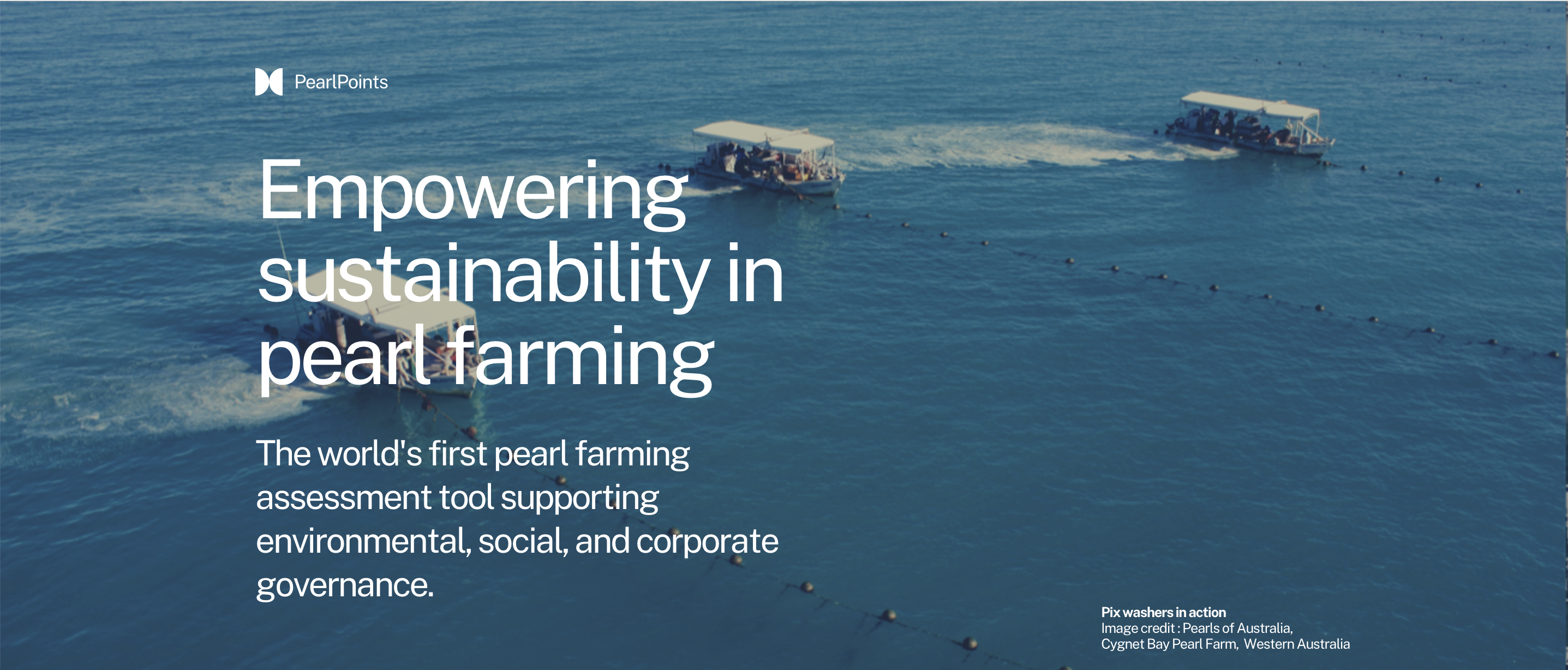

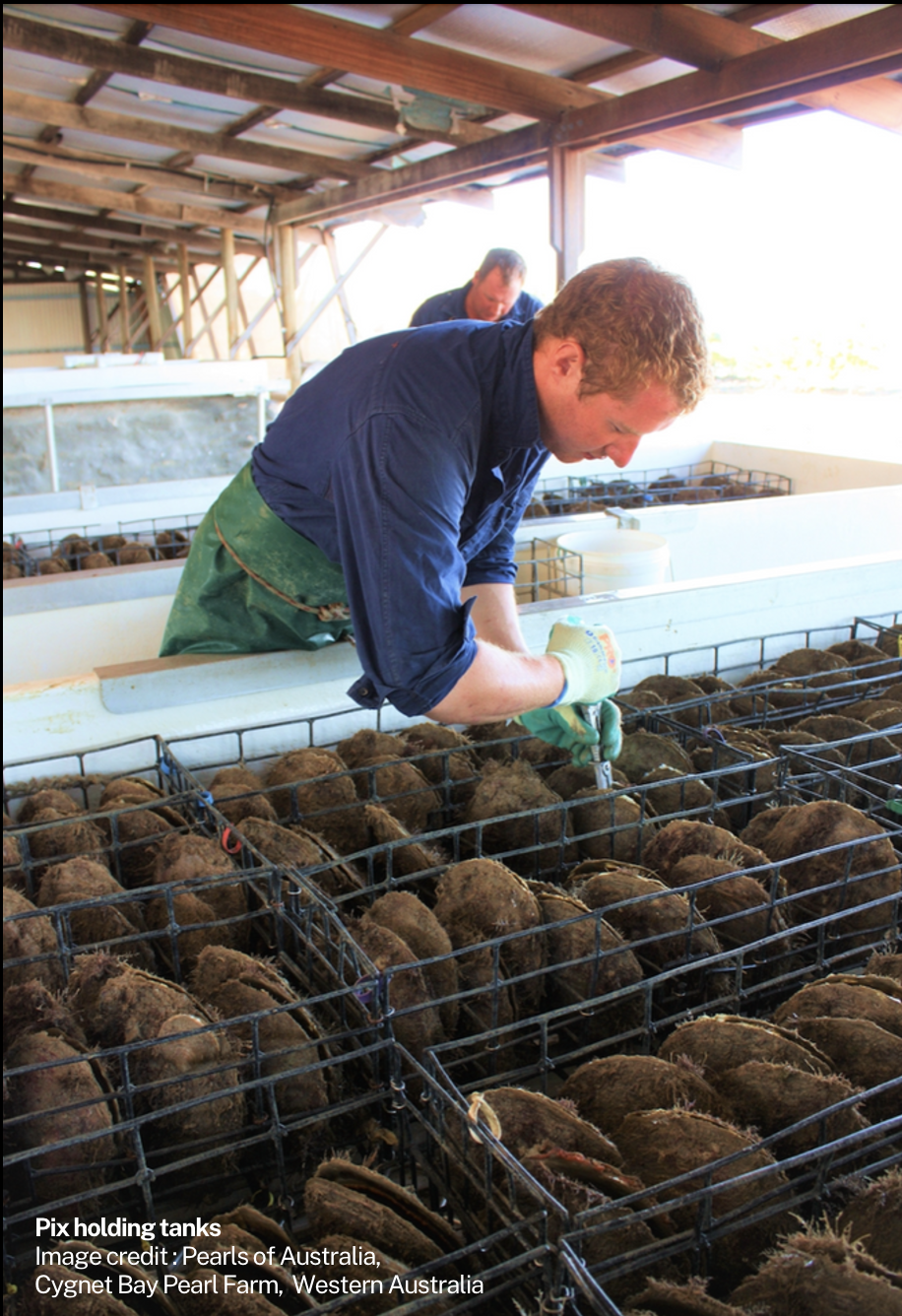

Helping pearl farmers unlock their sustainability potential
The environmental impact of pearl farming is determined by how efficiently resources such as land, water, and farming infrastructure are used, and the consequences of their use – positive and negative – on the ecosystems and communities in which farmers work.
PearlPoints allows pearl farmers to explore a range of environmental impacts associated with their activities. It provides basic guidance on key environmental indicators, including:
- Greenhouse gas emissions
- Nutrient release and extraction
- Land and marine use
PearlPoints also helps farmers understand if they are effectively considering ecological, social, and corporate governance (ESG) in their business.
With this information, pearl farmers can:
- Improve the data they collect, monitor, and report to better understand their environmental impact
- Make more informed decisions about priority sustainability strategies and impact management
- Plan the next steps of their sustainability journey

Using The Nature Conservancy's ESG assessment framework for aquaculture, PearlPoints was developed to help pearl farmers take a first look at the impact of their activities.
By consolidating key criteria into a single, harmonized, open, and evidence-based tool, PearlPoints is a simple way to start your sustainability journey
Read more about why ESG could catalyze the next phase of sustainable aquaculture development.
Impact frameworks and methodologies
Sustainable Development Goals
The Sustainable Development Goals (SDGs), also known as Global Goals, are a set of 17 integrated and interrelated goals to end poverty, protect the planet, and ensure that humanity enjoys peace and prosperity by 2030.
Reporting on the SDGs is important in communicating to stakeholders the company's commitment to contributing to the Global Goals, claiming accountability and responsibility to take the necessary actions, and measuring progress over time.
PearlPoints guides sustainability across two key needs:
- Understanding and measuring life cycle impacts
- A farmer's approach to ESG
Businesses are increasingly required to report how their commitments contribute to climate and biodiversity goals. Global initiatives such as the Science-Based Targets (SBTi) and the GHG Protocol are helping businesses set meaningful targets and monitor progress to make change.
Environmental, Social and Governance reporting
ESG is designed to incorporate the needs of nature and people into a company or organization's strategy. It takes a holistic view of impacts and uses metrics that can deliver long-term, enduring sustainability and community outcomes, including environmental actions but also policies for diversity, equity, and inclusion.
ReCiPe methodology
ReCiPe is a method for life cycle impact assessment developed in 2008 by RIVM, Radboud University Nijmegen, Leiden University, and PRé Sustainability. ReCiPe transforms the long list of impacts that arise from production activities, documented in a life cycle inventory, into a range of key indicators and indicator scores. These indicator scores express the relative severity on an environmental impact category.
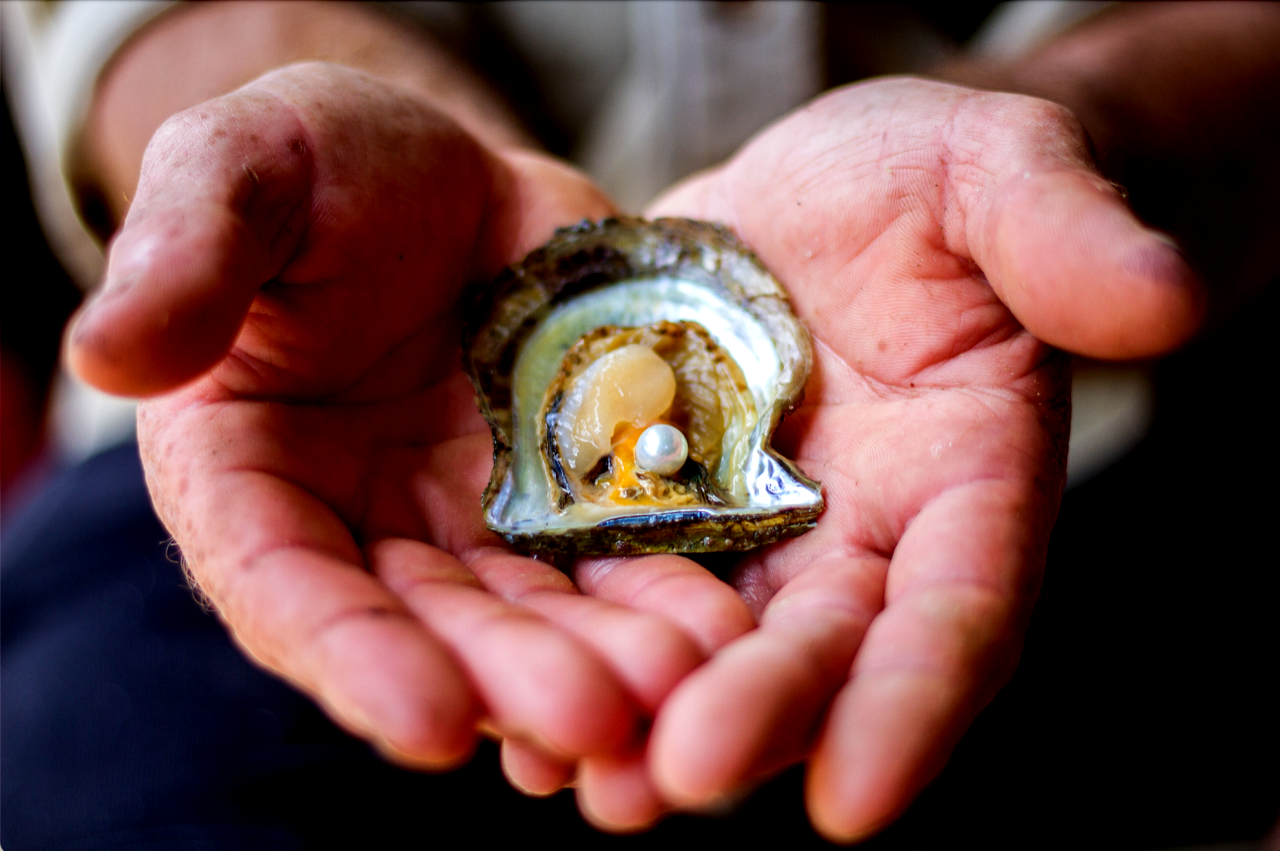
Know your impact
We are committed to supporting pearl farmers as they work to continually improved their sustainability and reduce their environmental impact.
By providing information about your impacts, PearlPoints can help you accelerate your approach to ESG and achieve your environmental goals.
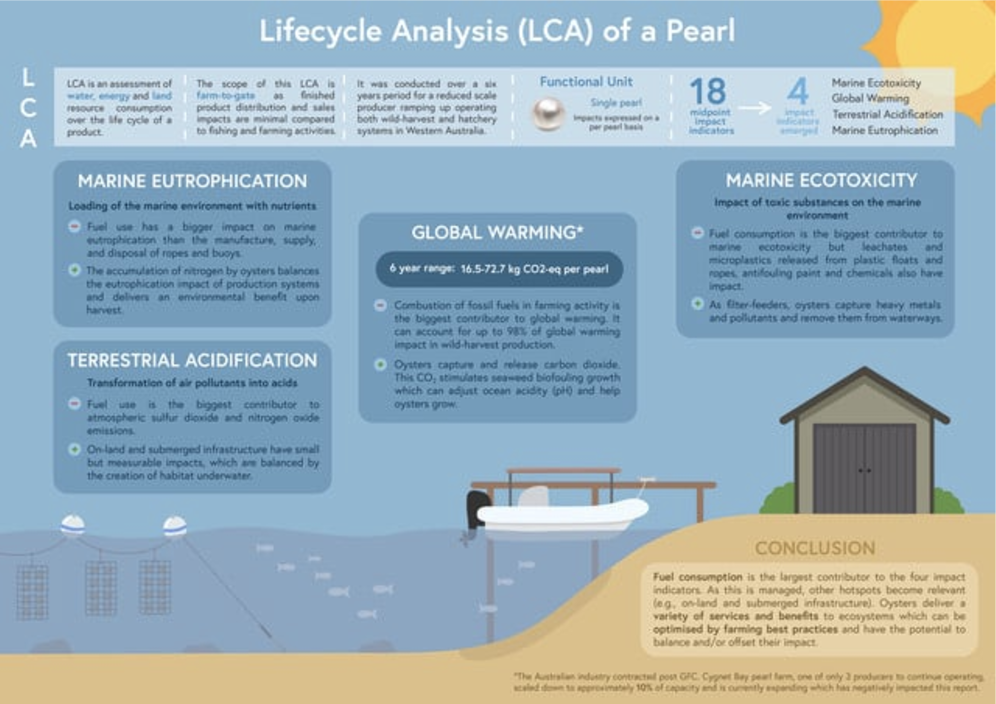

Life Cycle Analysis (LCA)
“The Pearl"
Lifecycle Analysis (LCA) of pearl production reveals fuel consumption as the primary environmental concern, driving marine ecotoxicity and global warming impacts.
Oysters, as filter-feeders, counterbalance this by capturing pollutants and promoting seaweed growth, potentially mitigating the industry's environmental footprint through responsible farming practices
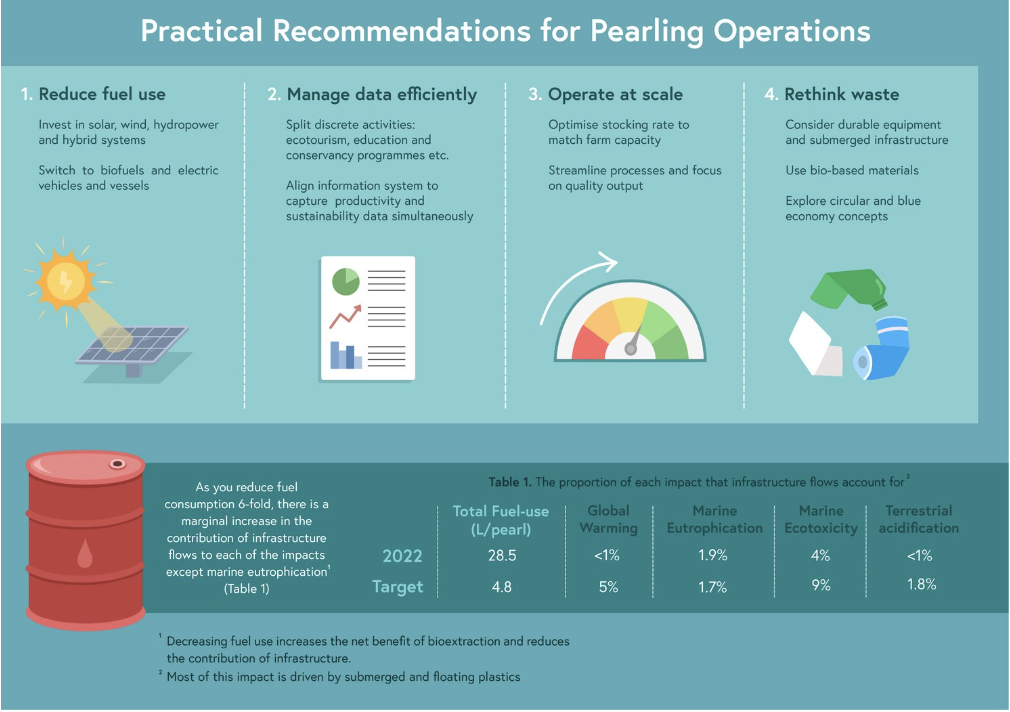

Practical Recommendations
"The Operations"
- Fuel Reduction: Invest in renewables and eco-vehicles.
- Data Efficiency: Segregate activities, integrate data for productivity and sustainability.
- Scale Operation: Optimize stocking and enhance quality.
- Waste Rethink: Use durable gear, bio-materials, and circular practices. Infrastructure impacts vary but generally decrease as fuel use reduces





